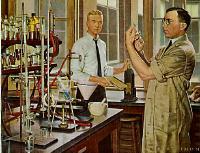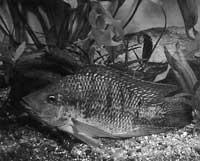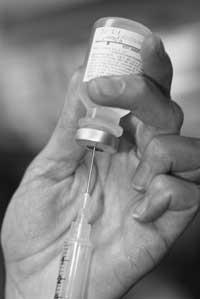Dependence on daily overtaking insulin injection
2000/06/13 Roa Zubia, Guillermo - Elhuyar Zientzia

92% of patients with type 1 diabetes currently require artificial insulin. This hormone controls the amount of glucose in the blood because it opens the cells' doors to sugar. Because insulin plays the role in the blood, type 1 diabetics have to get directly into the veins. Although syringes are increasingly comfortable, this daily need generates a great dependence. A group of Canadian scientists investigate to achieve another type of solution.
Despite continuing insulin treatment, it is not always effective enough and there is a risk of hypoglycemia. Seven patients with this problem are transplanted in Langerhans from healthy areas. These islands contain cells that secrete insulin, among other things, and if they reproduce inside the patient would solve the lack of insulin production. All programs have failed or had a brief effect. In fact, 12.4% of all transplants since 1990 have exceeded one week of efficacy and 8.2% a year. As with most transplants, the greatest problem has been the response of the patient's immune system. In recent years the island isolation methodology has also improved significantly.
Multiple transplants
Each patient has received at least two donor islands. One of them needed a third transplant to completely overcome dependence on insulin treatment. Donors were people who were confirmed with brain death. The islands were removed and stored at body temperature at the University of Wisconsin until the deceased's family authorized it. The criteria for selecting donors was that of the results of the analyses to ensure the ease of isolation of the islands.
Patients were diabetics aged twenty-nine to fifty-four years. Transplants began in March 1999 and lasted until January of this year.
The seven immediately lost the need for daily insulin treatment. However, periodic insulin doses have subsequently been needed for those who received the least number of islands. Otherwise no problem of rejection has been generated. Six of the seven needed another 29 days after the first transplant. The thickest patient also had to be made the third. Scientists claim that no one has had signs of insulin dependence. They have greatly improved their quality of life. To see if the effect remains throughout life.

Gai honi buruzko eduki gehiago
Elhuyarrek garatutako teknologia





